At the start of the decade, eCommerce saw a rapid surge in popularity, and home decor shoppers were no exception. Consumers are now able to easily navigate online shopping for furniture, thanks to the wide variety of tools available to them. From improved customer experience to pinpointed recommendations, the online home decor shopping journey has become much more user-friendly.
One of eCommerce’s advanced customer-facing features is visual search. In addition to delivering customer journeys that stick, it can foster growth for online brands and retailers in more ways than one.

State of the Home Decor eCommerce Market
The last two years saw a rise in both online spending and mobile shopping, both instrumental in the growing popularity of the online homeware market. The market is significant, generating around $133 billion in 2021 in the US alone, and accounting for 17% of the total retail eCommerce revenue in the country. The segment’s penetration rate is also anticipated to increase by 5.7% from 2022 to 2025. Users purchase various items, with the top categories being lamps and lighting, bedroom furniture, and living room furniture. The market is expected to remain strong – a compound annual growth rate of 10%, greater than the predictions for electronics and media.
With the rising competition in the online retail landscape, standing out will become increasingly difficult. The willingness to adopt eCommerce technology can help brands have an edge online.
Overcoming Obstacles in the Online Home Decor Market
When it comes to discovering products online, homeware shoppers face the same predicament as their fashion counterparts: it can be difficult to get results from search engines that are exactly right. Shopping is highly visual – customers might have a mental picture of the style they’re envisioning in a certain room, and know instantly what they like when they see it, but they can’t really describe it.
Paper product catalogs, a traditional shopping model, can be helpful tools because all the information is laid out plainly and clearly. Online, however, customers must navigate through a list of items with different configurations such as color, style, and size, making decision paralysis highly likely. Research finds that 54% of consumers will abandon eCommerce sites if choosing becomes too difficult. On-site search and product tagging are key here. Not finding the desired items within a reasonable amount of time because of search limitations or inaccurate product tags can also lead to lost revenue. About 76% of shoppers say they’ll take their business elsewhere if the customer experience doesn’t meet their expectations.
Selling home decor and furniture online is challenging because customers need to trust brands without touching or seeing products in person. There is a danger that consumers might feel unequipped to discern product quality and unsure of what they’ll receive. To make customers feel at ease, brands have to do more than just provide complete, detailed product information. They also have to meet their customers’ emotional and individual needs through tailored customer journeys. Otherwise, customers might abandon the process, or return the product once it’s delivered if it doesn’t meet their expectations. About 6% of all homeware and furniture bought online are returned by customers.
10 Ways Visual Search Fosters Growth
Visual search is not just a “nice-to-have” convenience that you offer your shoppers. The technology that serves as the foundation for company processes and website functions also enables brands to deliver memorable and satisfying shopping experiences, resulting in improved metrics and increased customer loyalty.
1. Connect Customers to the Right Products at the Right Time
Customers get shopping inspiration from everywhere, anytime. When they go to your store to find what they have in mind, it’s important to surface their desires immediately and accurately. Visual search eliminates the need to communicate through words, because the tool can analyze an image and immediately recognize some of the most subtle attributes.
Online shoppers have limited attention, time, and patience – speed matters just as much as accuracy for an optimal customer experience. At least 47% of shoppers expect sites to load within two seconds, and 40% will leave once it takes more than three. With visual search powered by AI working in real-time, brands can display relevant results quickly. Another option for online retailers is to use professional, pre-loaded images to inspire customers to discover new products, as seen on sites like Canadian retailer Tanguay.
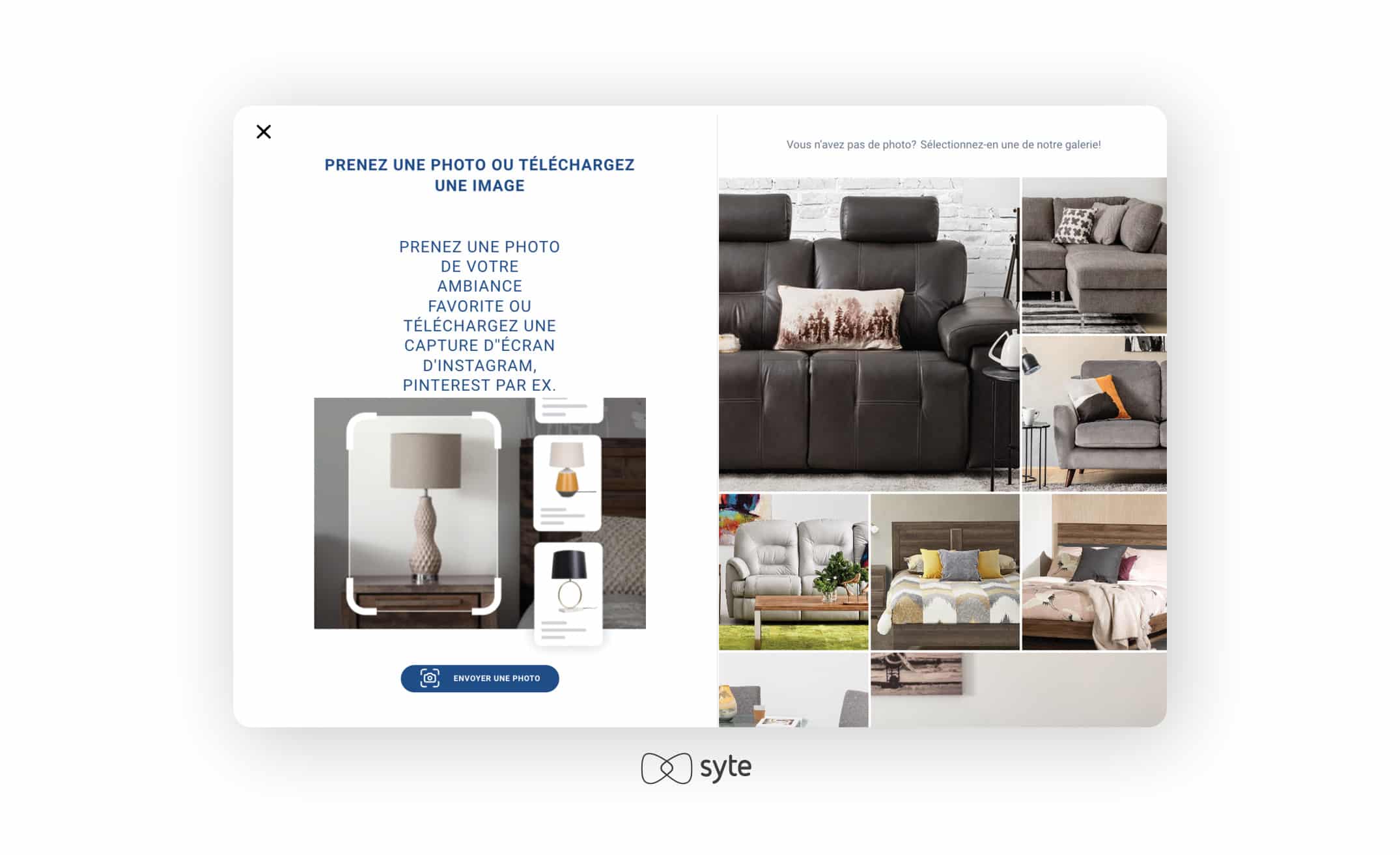
2. Build Seamless, Personalized Shopping Experiences with a Few Clicks
Visual search has gone a long way – today, it’s no longer a stand-alone feature. It powers other functions that encourage product discovery. Features such as “Shop the look” and “Shop similar” buttons that filter your inventory to display similar products can help shoppers zero in on the exact product they’re after. Indian tile company Orientbell shows shoppers similar products without having to upload an image. The customized experience conveys a sense of familiarity and understanding, which customers are all for – nearly half of customers say they’re more inclined to shop with a brand that offers personalization.
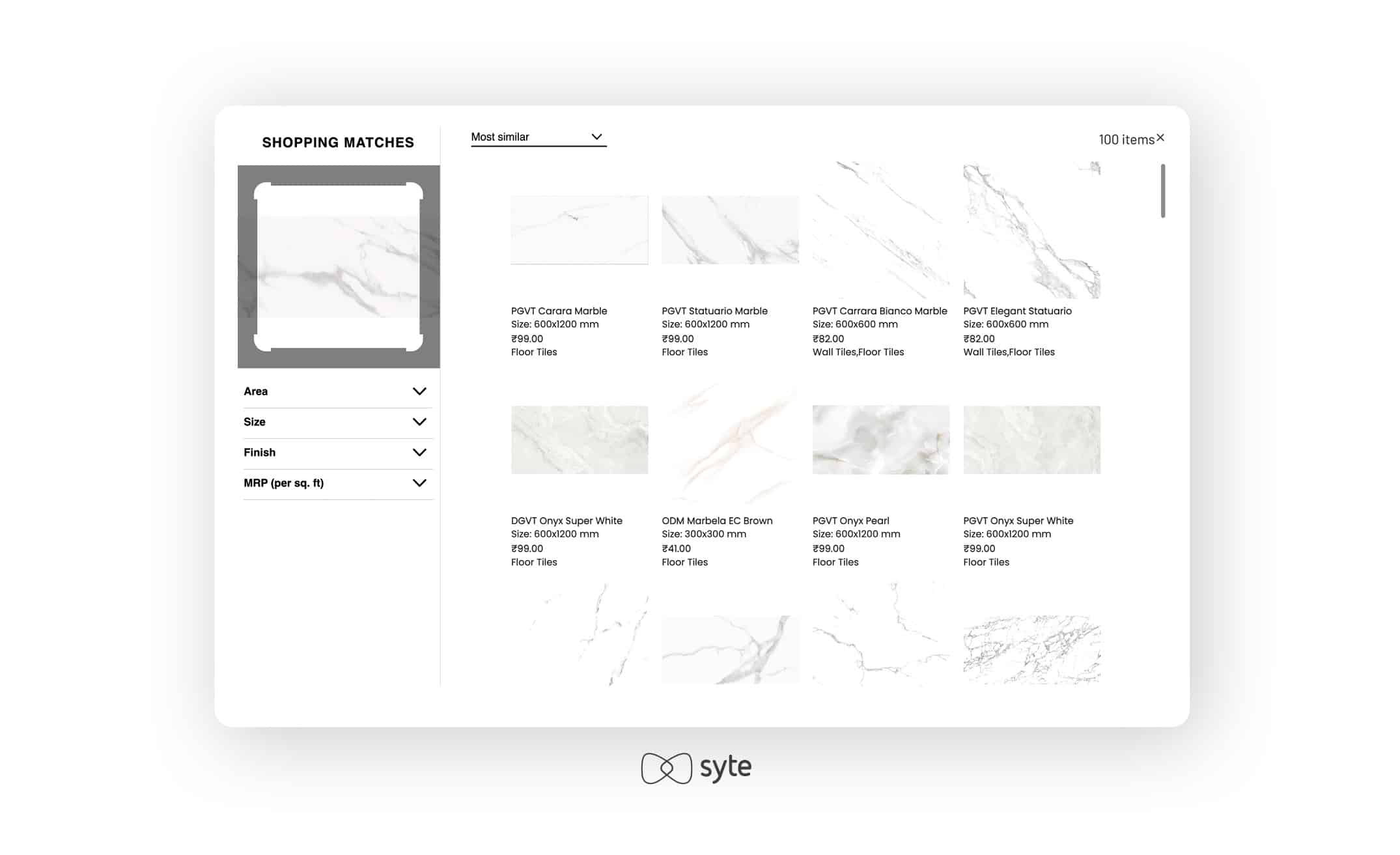
3. Ensure Better Inventory Management
In 2022, a third of home decor and furniture customers are shopping online. And demand will no doubt continue to grow. Through visual search technology, eCommerce sites can prevent customers from experiencing overstocks and out-of-stock situations, which can be a major drop-off point from the shopping journey. By giving customers visibility into stock availability (both offline and online), brands can increase customer satisfaction. Moreover, visual search can drive automated inventory management, so shoppers could be informed as soon as items are made available and see which other relevant items are in stock.
4. Display Relevant and Available Products Relevant to Every Persona
One of the ways brands can deliver a coherent and strong shopping experience is through an effective home decor merchandising strategy. Ecommerce sites can promote or demote certain products and collections depending on a shopper’s persona, which can be determined through on-site customer searches and interactions. With proper segmentation, brands can anticipate customer needs and wants, which 66% of shoppers already expect. Satisfied customers lead to repeat purchases and organic recommendations that lower customer acquisition costs.
5. Make Product Discovery Easier with Relevant, Shoppable Social Commerce
Social media now offers more opportunities for shoppable content, encouraging stronger brand-customer connections. It’s something retailers should maximize, because 22% of customers prefer to discover new products on social media platforms.
To grab the attention of these shoppers, you can use Syte’s Discovery Stories to turn mobile browsers into buyers, with recommendations they can tap through, just like in stories on Instagram.
By utilizing visual search, you can enhance your product promotion strategy on social media and seamlessly connect it to your website. Incorporating user-generated content on high-traffic pages such as the homepage and product detail pages can add a relatable and familiar element to your site, particularly for shoppers who discovered your brand through social media channels. Additionally, ensuring that the content published is shoppable, with clear links to easily purchase the products, can not only improve the return on ad spending, but also increase the chances of successful conversions.
6. Optimize Attribute Assignments and SEO Descriptions for Improved Visibility
Visual AI can make it easier for your brand to attract new customers. With the automated assignment of product attributes and SEO optimization, eCommerce brands can improve their rankings on search engines that track their websites. For example, Tok & Stok, a specialty Brazilian furniture and home décor brand, fortifies its product detail page with thorough product descriptions and complete technical information. When shoppers search for an item or a new brand, more than half turn to Google. Brands with better visibility on search engines will come out ahead and connect with more potential customers.
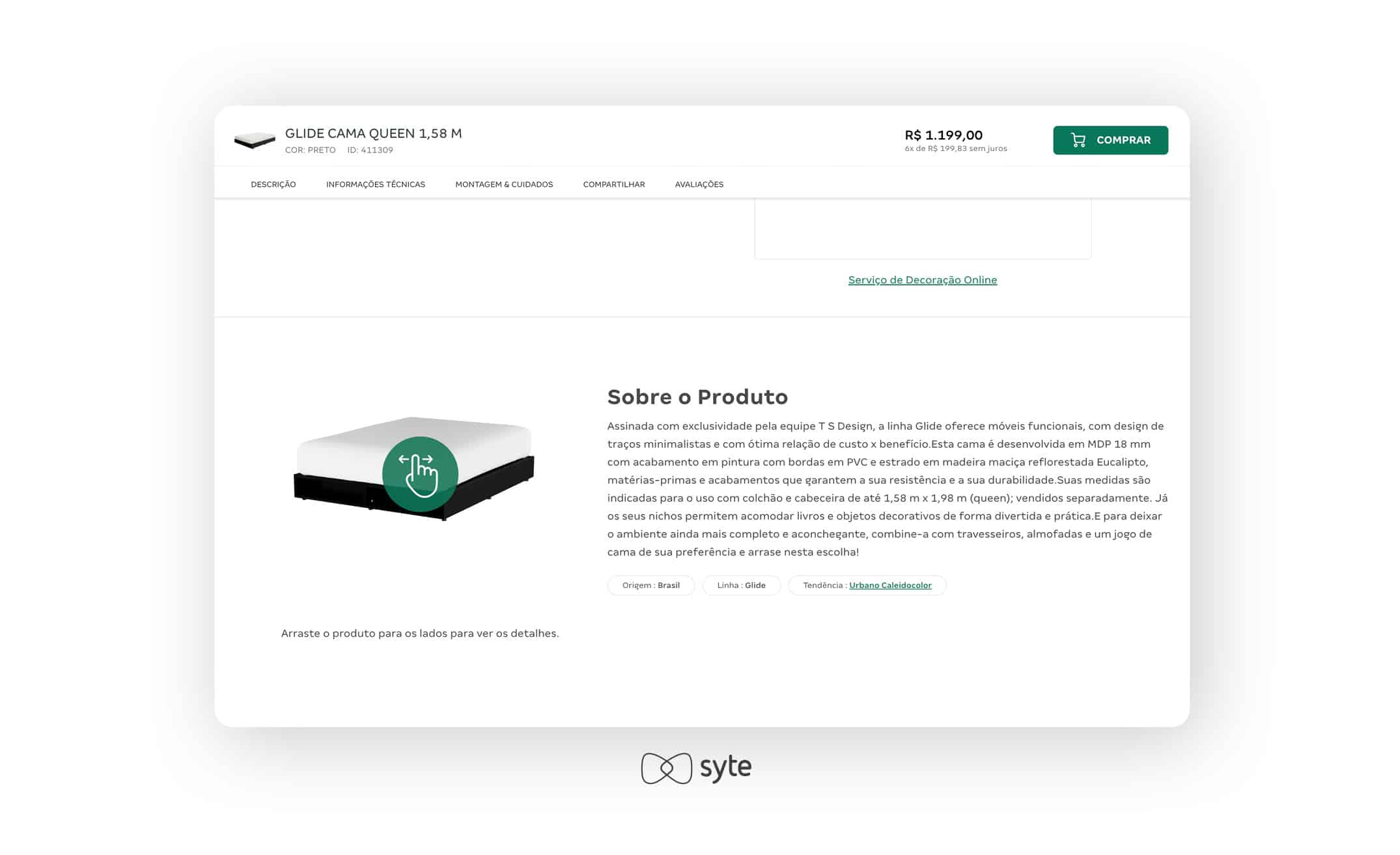
7. Boost AOV With Recommendation Carousels
Most shoppers are used to the level of assistance and familiarity that in-store shopping provides. Product recommendation engines can take the place of a sales assistant or friend by providing suggestions that consider personal tastes and intents. With curated eCommerce product recommendations, customers can find more of what they desire, whether it’s similar or complementary. An engine powered by visual search technology can increase average order value and sales revenue. Almost half of consumers say that a personalized recommendation convinced them to purchase products they didn’t intend to buy.
8. Unlock Product Success with Data-Driven Insights from Visual Search
Visual AI connects customers with products they want and provides brands with valuable information on what drives sales. Using AI-powered algorithms, the technology analyzes performance of specific product attributes and provides data that brands can use to stay ahead of trends and meet customer demand. Visual search capabilities enable brands to optimize their inventory and offer more of what customers are looking for, creating a more personalized shopping experience.
9. Maximize Resources with Automated Deep Tagging
Visual search technology is a game-changer for creating memorable shopping experiences for customers. Functions such as merchandising, navigation, and personalized product recommendations enhance the customer experience, while also improving the efficiency of backend operations. By using AI tagging, visual search technology can accurately detect multiple product attributes, reducing the time it takes for products to go live on your website. This increase in productivity can lead to more efficient inventory management. The data generated by visual search can also inform various business strategies, such as pricing, sales, marketing, and omnichannel readiness. This allows brands and retailers to free up resources and make data-driven decisions with more confidence.
10. Encourage Shopper Engagement
Visual search is gaining popularity in recent years, especially among younger shoppers. At least 12% of consumers in the US aged 18 to 34 regularly use photos and images to search for products on websites. Further, 62% of millennials value the ability to use visual search more than any other technology. You can even entice shoppers to take advantage of it with informative pop-ups, like Australian homewares and furniture retailer Temple & Webster. The ease of finding what you want in a catalog of thousands of products can encourage more positive customer interactions. And satisfied customers are usually happy to spread the word: 94% of US customers say they’ll recommend a company whose service they rate as “very good.”
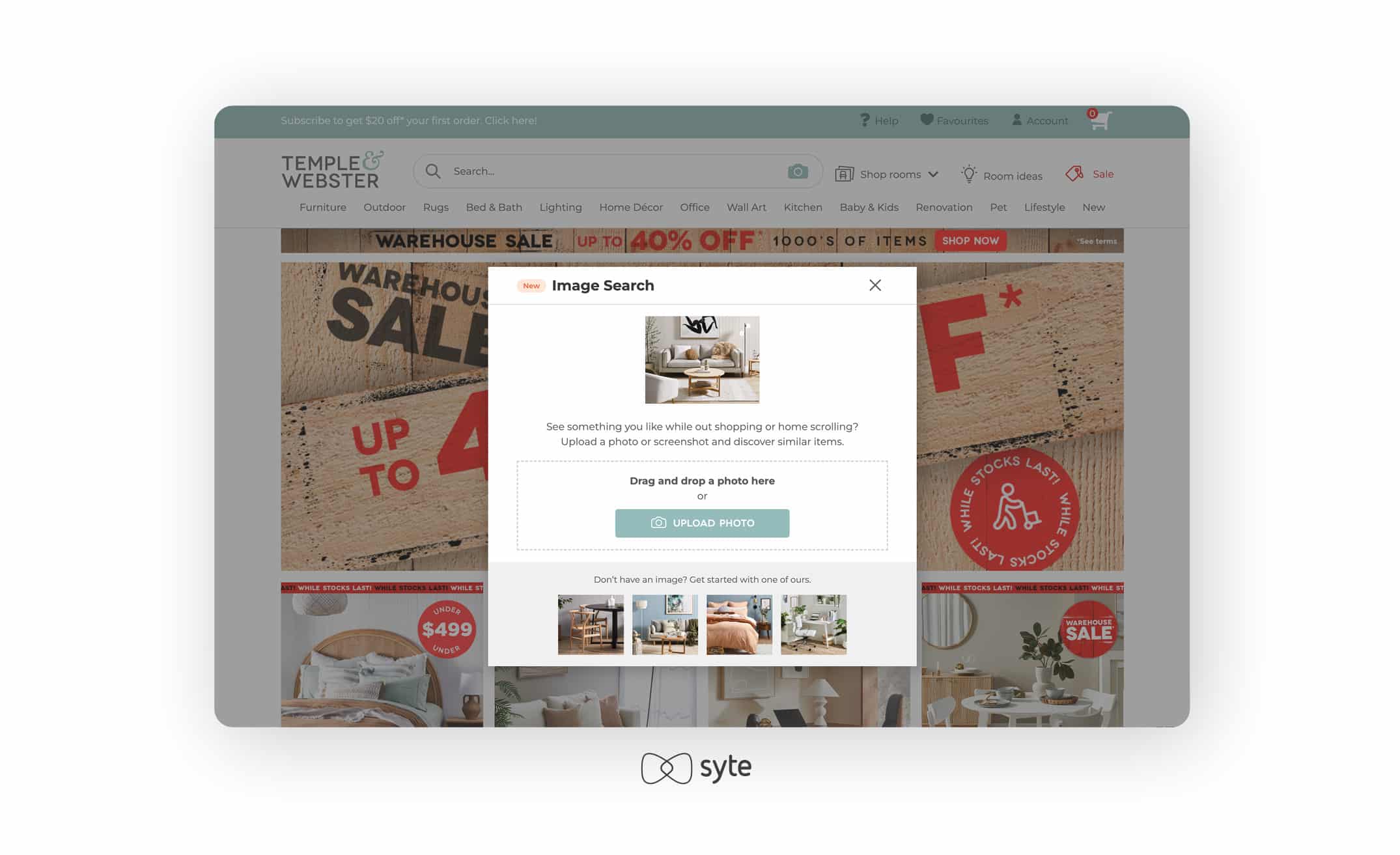
Reaping the Rewards: Real Results You Can’t Ignore
There are many benefits to reap from visual search and AI. Here are some brands who are ahead of the game:
Nourison
Nourison, a floor covering market veteran, offers a wide range of products, both manufactured in-house and sourced from private labels. To stay ahead of the retail industry’s shift to eCommerce, they have implemented visual search capabilities on both mobile and desktop platforms, allowing customers to easily discover new products. The integration of the technology, including features such as camera search and discovery buttons, resulted in an 8x increase in conversions and a 124% increase in average revenue per user (ARPU).
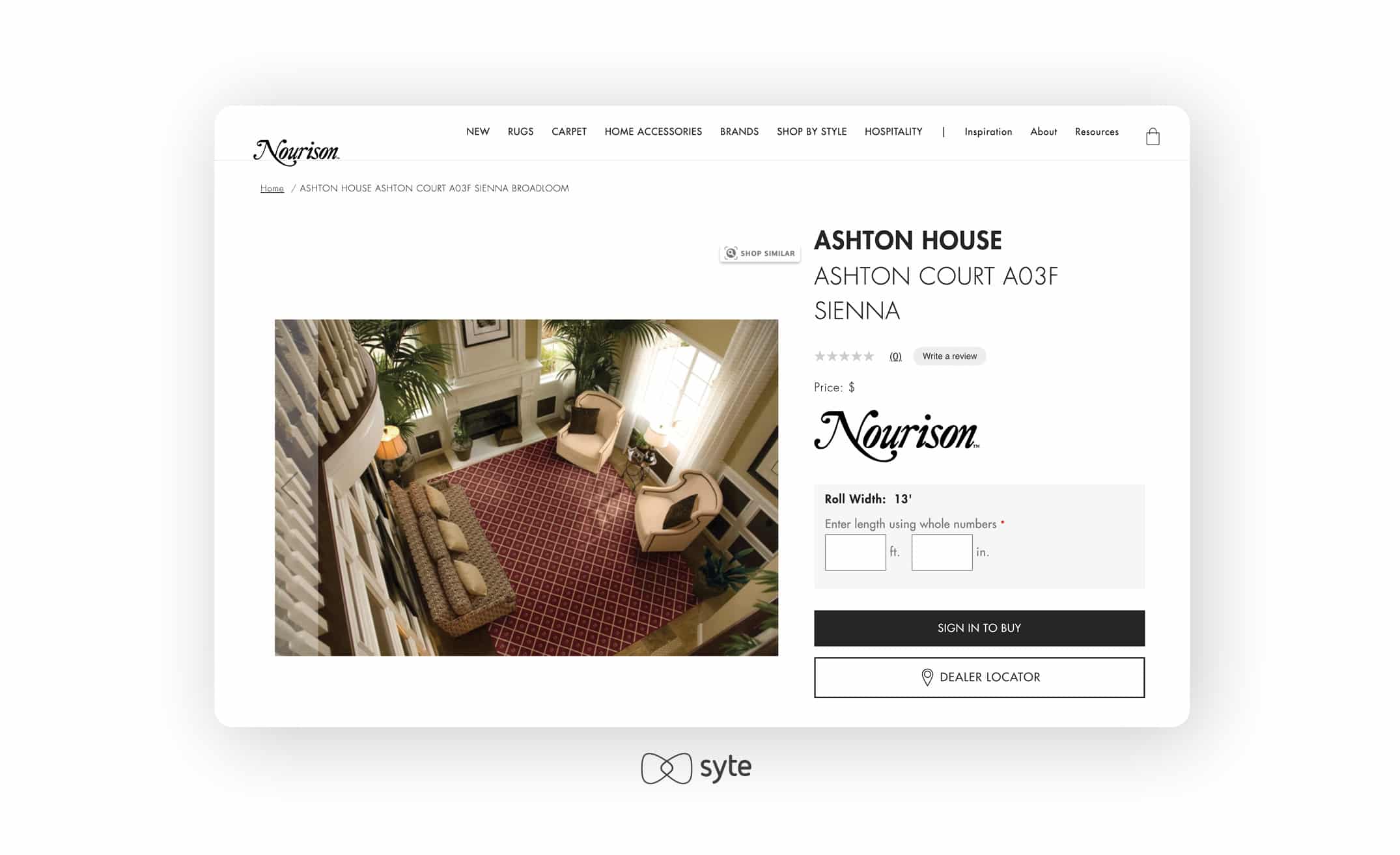
Mobly
Mobly, a leading South American online home decor retailer, is committed to providing sophisticated and personalized shopping experiences for its customers. To achieve this goal, it became the region’s first home furnishing retailer to adopt visual AI and search technology. With the introduction of furniture image search and discovery functions, the brand saw a 4.42% increase in conversions, an 8% increase in average order values (AOV), and a 130% increase in average revenue per user (ARPU).
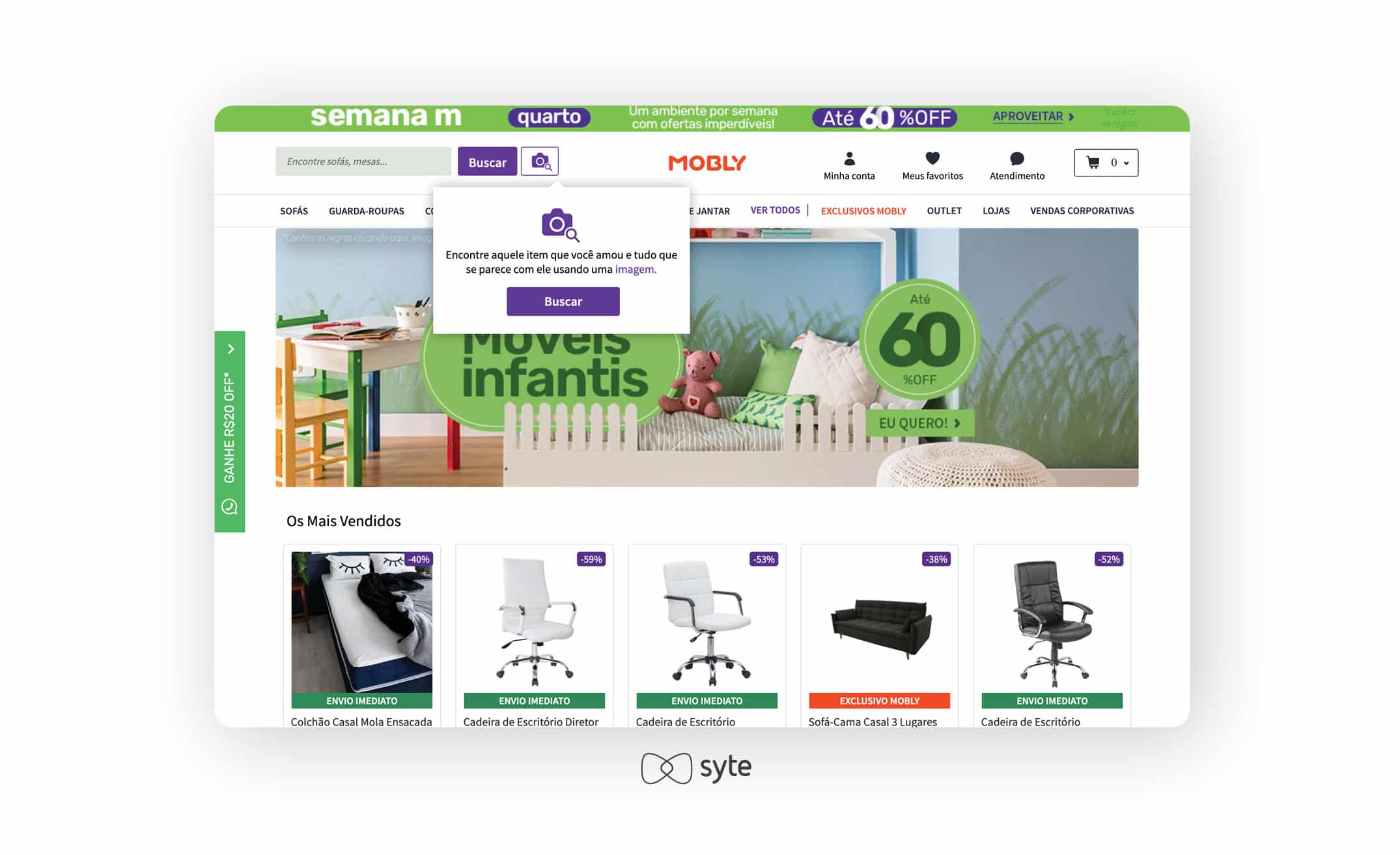
CITY Furniture
CITY Furniture is a well-established retailer with 50 years of experience in the market. While their showrooms throughout Florida continue to perform well, they wanted to bring the same level of service to their online customers. With an extensive product offering, CITY Furniture implemented visual search solutions such as camera search and shop similar carousels that helped customers find their desired products quickly and delivered a highly engaging shopping experience, increasing AOV by as much as 26.3%.
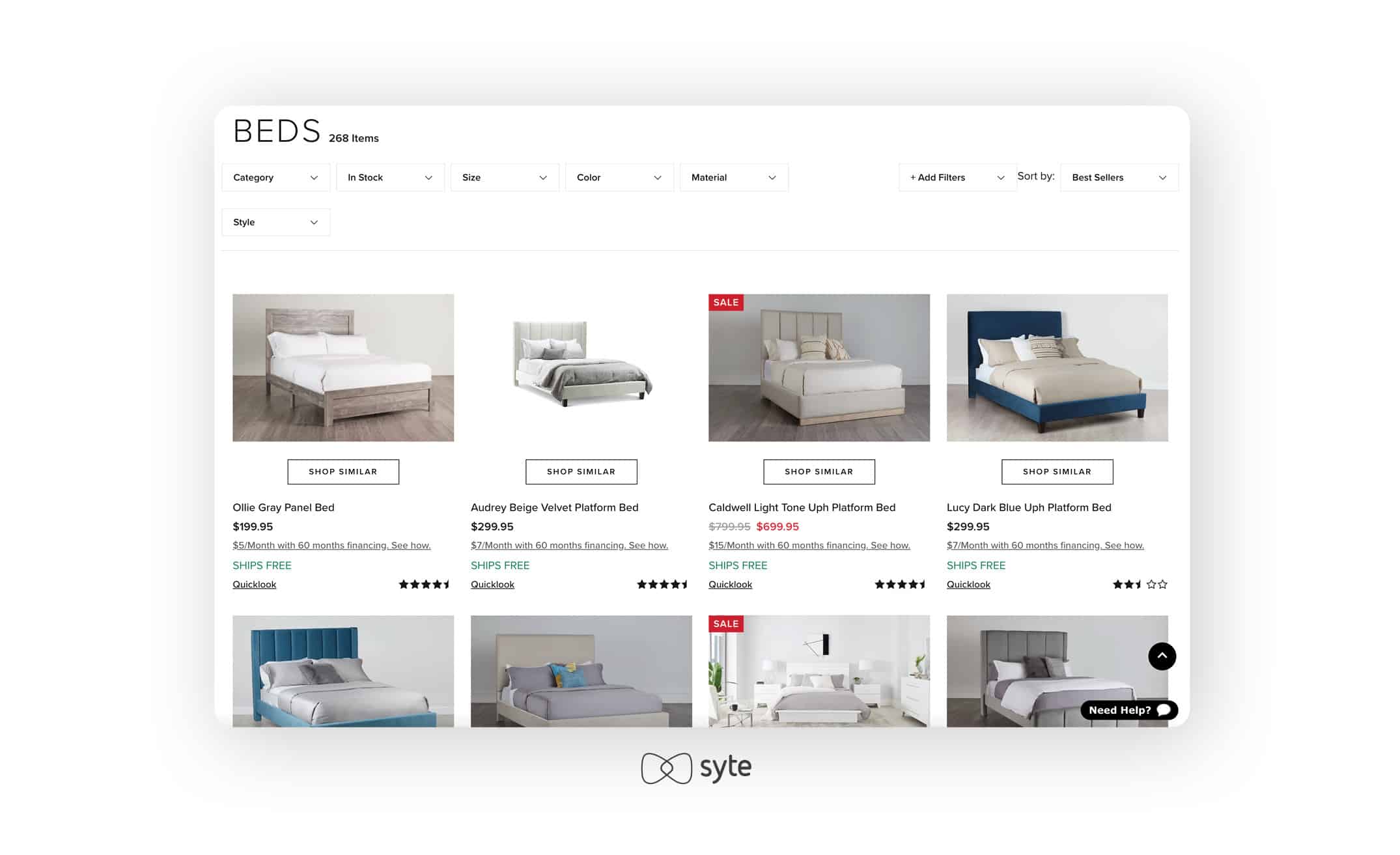
Coleman Furniture
Coleman Furniture, an online-only retailer, understands the challenges of eCommerce. As an early adopter of eCommerce furniture technology, they aimed to optimize the customer experience at scale. Their website is equipped with various visual AI-backed functions such as camera search, shop the look carousels, and discovery icons. These features allow customers to quickly find items that appeal to them, even among the thousands of SKUs in the retailer’s inventory. The solutions helped to boost conversions by 7.1x and increase average order value by 29%.
Level Up Your eCommerce Growth Trajectory with Visual Search
Visual search is a must-have for home decor and furniture retailers looking to stay competitive in the ever-changing market. When implemented with the right strategy, visual search can significantly boost conversions by enhancing the customer’s product discovery experience. It improves customer-facing processes such as smart merchandising, search results, and navigation, while also streamlining backend operations. Furniture shopping is both visual and emotional, and customers are drawn to brands that can deliver products in an intuitive, seamless, and personalized way, helping them create their dream home.